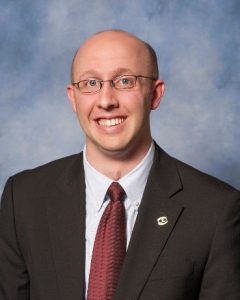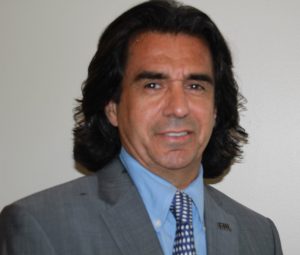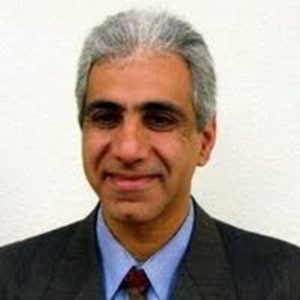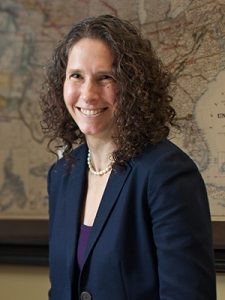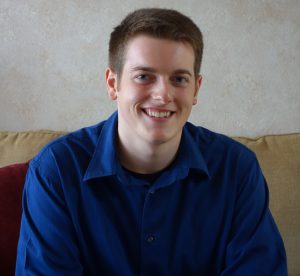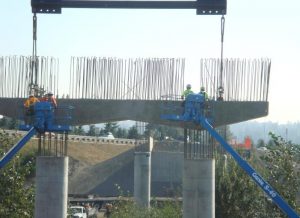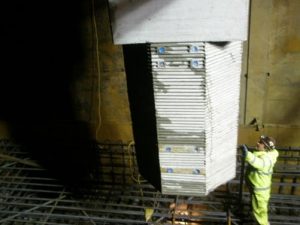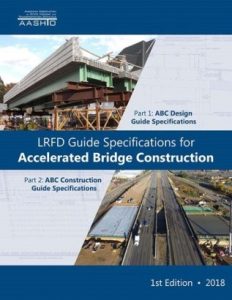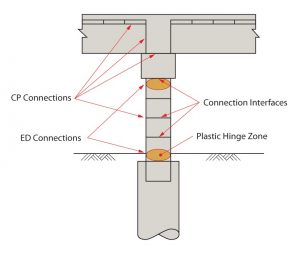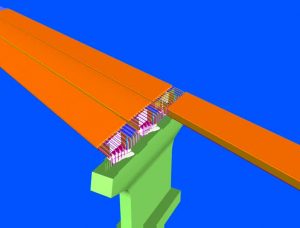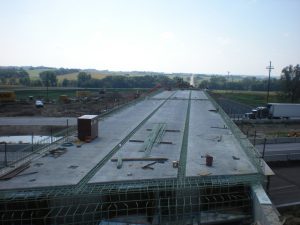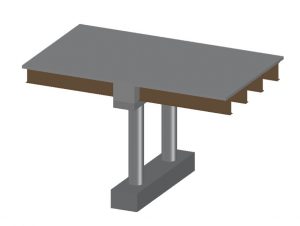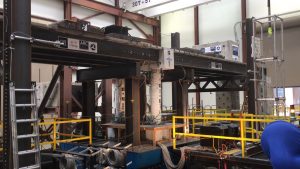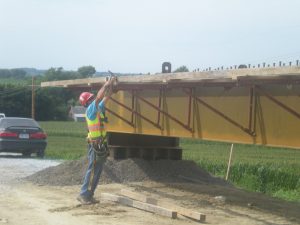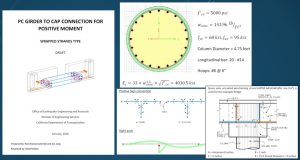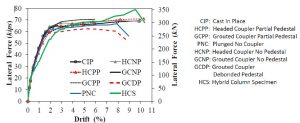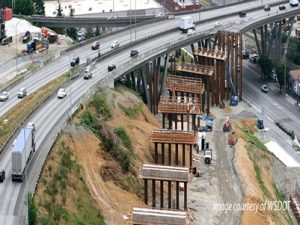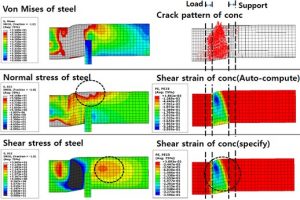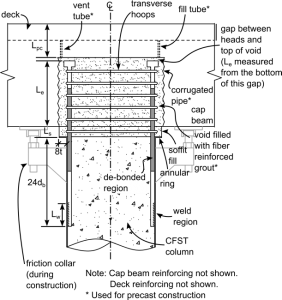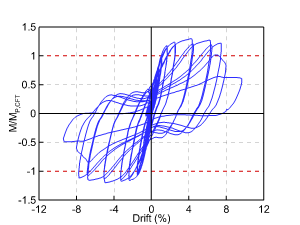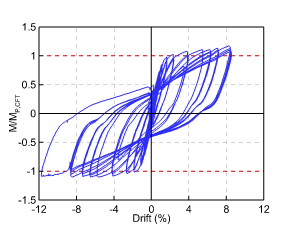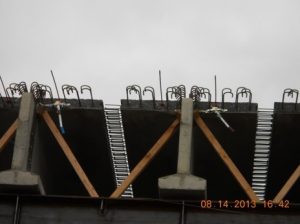September 10, 2019 11:00 am
by Bijan Khaleghi, Ph.D., P.E., S.E., State Bridge Design Engineer, Washington State DOT; Khashayar Nikzad, Ph.D., P.E., Principal Engineer, TranTech; Lee Marsh, Ph.D., P.E., Deputy Director, America’s Technical Excellence Center, WSP; Greg Banks, P.E., S.E., Senior Bridge Engineer, WSP; Atorod Azizinamini, Ph.D., P.E., Professor and Chair, Civil and Environmental Engineering Department, Florida International University; Toorak Zokaie, Ph.D., P.E., Earthquake Engineering Specialist, California Department of Transportation (Caltrans); Dorie Mellon, P.E., Senior Bridge Engineer, Caltrans; Dawn Lehman, Ph.D., P.E., Professor, University of Washington; Amy Leland, P.E., S.E., Seismic and Foundation Specialist, Washington State DOT; John Stanton, Ph.D., P.E., Professor, University of Washington; and Timothy Peruchini, EIT, Structural Design Engineer, Reid Middleton
The 2019 in-depth web training features ABC in moderate-to-high seismic regions, with a particular emphasis on seismic connections. It is four hours in length and consists of six modules, each a 30-minute presentation by an expert in the focus area of the module followed by a 10-minute Q&A session. This web training provides an opportunity for sharing the latest information in research and implementation of ABC in seismic regions. Devising connections that can accommodate inelastic cyclic deformations and are readily constructible is the primary challenge for ABC in seismic regions. Ductile behavior is desirable under earthquake loadings for both the longitudinal and transverse directions of the bridge. The web training demonstrates technologies for delivering bridge construction projects in weeks, rather than months, for reducing congestion, improving safety and increasing the quality of highway bridges in seismic regions. It addresses the use of innovative designs and materials in seismic design of prefabricated bridges. These innovative concepts include the use of ultra-high-performance concrete for precast members and connections.
Program - pdf
Module 1: Seismic ABC Design Requirements
by Bijan Khaleghi, Ph.D., P.E., S.E., State Bridge Design Engineer, Washington State DOT; and Khashayar Nikzad, Ph.D., P.E., Principal Engineer, TranTech
Description: This module focuses on providing design requirements for prefabricated bridge members for projects in seismic regions where ABC is considered. It focuses on the application of the LRFD specifications for seismic design of bridges with precast components in the light of the newly published AASHTO LRFD ABC Guide Specifications. Connections are of utmost importance for ductile behavior under seismic events. Detailed numerical examples for evaluation of connections between precast beams and cap beam under capacity protection confines and connections between the superstructure and the supporting substructure to ensure required level of ductile behavior are provided.
Bijan Khaleghi, Ph.D., P.E., S.E.
State Bridge Design Engineer
Bridge & Structures Office
Washington State DOT
Office: 360-705-7181
Email: KhalegB@wsdot.wa.gov
Bijan is State Bridge Design Engineer with the Washington State Department of Transportation, and adjunct faculty at Saint Martin’s University. He received his Master and Doctor of Engineering degrees from the National Institute of Applied Sciences, France. Bijan is a member of the AASHTO Committee on Bridges and Structures (COBS) Technical Committees T-8, Movable Bridges; T-10, Concrete Design; and T-20, Tunnels. He is a member of PCI and chair of the PCI Seismic Subcommittee; and member of ASBI; TRB Committees AFF30, Concrete Bridges and AFF50, Seismic Design and Performance of Bridges; and World Road Association-PIARC. Bijan is recipient of IBC, PCI, ASCE, SEI, and TY Lin awards.
Khashayar Nikzad, Ph.D., P.E.
Principal Engineer
TranTech
Office: 425-990-4134
Email: knikzad@trantecheng.com
Kashhayar (Kash) is Principal Engineer with TranTech. He graduated in 1992 from the University of Illinois and has 25 years of research, engineering, and project management experience that includes structural analysis and design, seismic research and retrofit recommendation and construction supervision and inspection for various types of bridges and structures. Lately, Kash has been focusing on ABC technology and contributed to a PCI/ AASHTO report on the subject that is currently going through its publication process. He has contributed 15 technical papers to civil engineering journals and conferences.
Module 1 - pdf of presentation
Module 2: AASHTO ABC Guide Specifications, Seismic Design Requirements for Connections, and Connection Design Examples
by Lee Marsh, Ph.D., P.E., Deputy Director, America’s Technical Excellence Center, WSP; and Greg Banks, P.E., S.E., Senior Bridge Engineer, WSP
Description: This module focuses on the seismic provisions and concepts of the recently adopted AASHTO LRFD Guide Specifications for ABC. The module covers general guiding principles for seismic design with ABC, including classification of earthquake-resisting systems and elements, energy-dissipating elements and capacity-protected elements. Example element and connection types are discussed, and unique design considerations for each are addressed. The objective is to provide a “building-block” system of tools that designers can use to apply ABC in both low- and high-seismic hazard regions.
Lee Marsh, Ph.D., P.E.
Deputy Director
America’s Technical Excellence Center
WSP
Office: 206-431-2340
Email: lee.marsh@wsp.com
Lee is Deputy Director of America’s Technical Excellence Center at WSP. He is well-known in the bridge seismic design community for his work supporting seismic design specification development and for his work in ABC as it relates to seismic performance. Lee has supported the AASHTO COBS Technical Committee T-3, Seismic Design, in development and maintenance of the AASHTO LRFD Guide Specifications for Seismic Bridge Design. He has also been a Principal Investigator for recent national ABC research projects, including the recently published AASHTO LRFD Guide Specifications for ABC, the FHWA Highways for LIFE Precast Bent System for High Seismic Regions, and NCHRP Report 698, Application of ABC Connections in Moderate-to-High Seismic Regions. Lee also serves on the TRB Committee AFF50, Seismic Design and Performance of Bridges, and instructs the NHI’s LRFD Seismic Analysis and Design of Bridges course.
Greg Banks, P.E., S.E.
Project Manager
WSP
Office: 206-431-2253
Email: greg.banks@wsp.com
Greg is a Senior Bridge Engineer with WSP. He has a strong background in seismic design and use of ABC techniques on bridge structures, including the implementation of grouted duct connections, drilled shaft socket connections, spread footing socket connections, and ultra-high-performance concrete deck connections, into bridge designs constructed in high seismic regions. Working under Lee Marsh, Greg participated in the development of design examples for NHI’s LRFD Seismic Analysis and Design of Bridges course. He serves on the PCI Committee on Bridges and currently is supporting the development of the PCI State-of-the-Art Report on Seismic Design of Precast Concrete Bridges, which includes design examples associated with the use of ABC techniques in high seismic regions.
Module 2 - pdf of presentation
Module 3: ABC Seismic Bridge System Utilizing Steel
by Atorod Azizinamini, Ph.D., P.E., Professor and Chair, Civil and Environmental Engineering Department, Florida International University
Description: Simple for Dead Load and Continuous for Live load (SDCL) bridge systems have gained popularity in non-seismic applications, and many SDCL bridge systems are in service in non-seismic areas. This module provides the design, detailing, and construction sequence for using SDCL bridge systems in conjunction with the ABC philosophy in moderate to high seismic regions. The system described include precast column alternatives, alternatives for connecting precast columns to superstructures or substructures, and connection alternatives including use of Ultra-High-Performance Concrete (UHPC).
Atorod Azizinamini, Ph.D., P.E.
Professor and Chair
Civil and Environmental Engineering Department
Florida International University
Office: 305-348-3821
Email: aazizina@fiu.edu
Atorod is Professor and Chair of the Civil and Environmental Engineering Department at Florida International University, and Director of the ABC-UTC. He has carried out a number of research studies in the earthquake engineering field in both bridge- and building-related topics. His current research studies include development of economical steel bridge systems suitable for seismic areas in conjunction with ABC. Atorod was part of a U.S. research team during U.S.-Japan cooperative work in earthquake engineering. He has published extensively and routinely gives keynote talks on bridge engineering topics in the U.S. and abroad. He is a registered Professional Engineer.
Module 3 - pdf of presentation
Module 4: Precast ABC Bents and Connections
by Toorak Zokaie, Ph.D., P.E., Earthquake Engineering Specialist, California Department of Transportation (Caltrans); and Dorie Mellon, P.E., Senior Bridge Engineer, Caltrans
Description: This module focuses on seismically-resilient precast column-to-cap and cap-to-girder connections. A number of improved details have been developed by Caltrans and have been analyzed in detail, tested, and constructed in pilot projects. The goal for these connection details is to emulate cast-in-place monolithic performance, prevent separation of girders at cap/diaphragm, and provide full capacity for formation of plastic hinges in columns. Four different categories of connections are developed for various design conditions and seismic demands.
Toorak Zokaie, Ph.D., P.E.
Earthquake Engineering Specialist
Caltrans
Office: 916-227-8579
Email: toorak.zokaie@dot.ca.gov
Toorak is chief of Seismic Design Criteria Branch with the Office of Earthquake Engineering at Caltrans. He received his Master’s (focusing on prestressed girder design) and Ph.D. (focusing on earthquake engineering) from the University of California, Davis in 1985. He has been active in the bridge industry with contributions to AASHTO LRFD and other bridge design guidance material. Toorak has published several papers and presentations, and has developed software for precast and post-tensioned structures. He is a member of the PCI Seismic Subcommittee.
Dorie Mellon, P.E.
Senior Bridge Engineer
Caltrans
Office: 916-227-8268
Email: dorie.mellon@dot.ca.gov
Dorie is a Senior Bridge Engineer in the Division of Engineering Services (Structures) at the California Department of Transportation (Caltrans). She received her Bachelor of Science in Civil Engineering from the University of California at Davis in 1986. Since 1986, Dorie has worked in the areas of bridge design, construction, seismic research and implementation, cost estimating and constructability review and structure policy and innovation. Since 2012 her emphasis has been developing policy and procedure for the statewide implementation of innovative programs. Dorie’s primary focus has been mainstreaming ABC in California through outreach, development of planning tools, design and construction standard details and practices, and the identification of deployable research for the advancement of ABC in California. She is the Caltrans ABC Technical Committee Chair and a member of the NCHRP Project Panel 12-98, “Guidelines for Tolerances for Prefabricated Bridge Elements and Calculating Dynamic Effects in Large-Scale Bridge Moves.” Dorie is the recipient of the 2017 Professional Engineers in California Government Professional Achievement Award.
Module 4 - pdf of presentation
Module 5: Seismic Resilient Concrete-Filled Steel Tube Substructures
by Dawn Lehman, Ph.D., P.E., Professor, University of Washington; and Amy Leland, P.E., S.E., Seismic and Foundation Specialist, Washington State DOT
Description: Concrete-filled steel tube (CFT) columns offer an attractive ABC alternative to conventional precast concrete or structural steel construction in both seismic and non-seismic regions. Results from CFT component tests at the University of Washington demonstrate that these members have high flexural strength and stiffness and approximately 2.5 times the shear strength of a similar reinforced concrete column, making them ideal for piles subjected to large lateral forces. Internal reinforcement, including spiral reinforcement, is not needed, as the spiral is not activated where the tube is present and longitudinal reinforcement does little to contribute to the flexural strength. Over 30 tests have been conducted on two types of connections that reach approximately 8% drift without strength deterioration. Research results have been implemented in the WSDOT Bridge Design Manual. This presentation describes the test results, design expressions, and connection details and their implementation in the field.
Dawn Lehman, Ph.D., P.E.
Professor
Civil & Environmental Engineering Department
University of Washington
Office: 206-715-2108
Email: delehman@uw.edu
Dawn is a Professor of Civil and Environmental Engineering at the University of Washington, Seattle. She received her BSCE from Tufts University in 1989 and her Ph.D. for the University of California, Berkeley in 1998. Her area of expertise includes seismic design, analysis, and retrofit of steel, concrete and composite structural systems. Together with Professor Charles Roeder, she has investigated new connections and design methods using concrete-filled tubes as piers or deep foundation elements in bridges and high-speed rail. She has published over 150 technical journal articles and papers. Her research has been supported by the NSF, Caltrans, WSDOT, Pankow Foundation, ACI, AISC and several other organizations. She is the recipient of numerous awards for her research publications and service to the University of Washington.
Amy Leland, P.E., S.E.
Seismic and Foundation Specialist
Washington State DOT
Office: 360-705-7394
Email: LelandA@wsdot.wa.gov
Amy is the Bridge Seismic and Foundation Specialist for the WSDOT Bridge and Structures Office. She graduated with her Master of Science in Engineering degree from the University of Washington, and is licensed as a Professional Engineer and a Structural Engineer. Amy has been working in the WSDOT Bridge Design Office since 1999. Her bridge design experience includes structural analysis and design for reinforced concrete, prestressed concrete, post-tensioned concrete, and steel bridges.
Module 5 - pdf of presentation
Module 6: Use of UHPC for Longitudinal Joints in Deck Bulb Tee Bridge Girders
by John Stanton, Ph.D., P.E., Professor, University of Washington; and Timothy Peruchini, EIT, Structural Design Engineer, Reid Middleton
Description: Precast decks, and precast girders such as deck bulb tees that incorporate decks, offer superstructure construction options that require less on-site time than conventional cast-in-place decks. Precast decks require joints, and UHPC is an ideal material because of the high bond strength that it can develop at early ages. This module addresses the design and construction of such precast elements and joints, including the loading demands on the joints, their expected capacities, design methodologies and construction requirements. Precast decks may be used in both seismic and non-seismic applications, because the loadings are largely controlled by wheel loads.
John Stanton, Ph.D., P.E.
Professor
University of Washington
Civil & Environmental Engineering Department
Office: 206-543-6057
Email: stanton@uw.edu
John is a Professor of Civil Engineering at the University of Washington, Seattle, where he has taught and conducted research for 41 years. He specializes in Structural Engineering. John holds degrees from Cambridge University (UK), Cornell and UC Berkeley, and worked in structural design practice in England, France and Canada for several years before joining academia. His research activities focus on earthquake engineering, bridge engineering (especially bearings), and reinforced and prestressed concrete. He is presently working on seismic performance of hollow prestressed concrete columns, self-centering prestressed columns, creep of concrete, UHPC, shear friction, ABC, high speed rail, lateral buckling and elastomeric bearings.
Timothy Peruchini, EIT
Structural Design Engineer
Reid Middleton
Office: 425-248-2912
Email: tperuchini@reidmiddleton.com
Tim is a structural engineer-in-training at Reid Middleton in Everett, WA where he has been working since 2017. He holds both undergraduate and graduate degrees from the University of Washington where he studied structural engineering in the Civil and Environmental Engineering department. Tim’s graduate research focused on classifying Ultra High-Performance Concrete material properties and implementing the material for connections between bridge girders to improve existing connection details and further bolster ABC practices. As a practicing engineer, Tim is currently working on design projects in the educational, healthcare, and housing sectors as well as multiple projects for the military which involve structural evaluation of vulnerable existing facilities.
Module 6 - pdf of presentation
Presentation Photos / Graphics
Module 1
1-1. Precast bent and precast column erection in Washington State
Module 2
2-1. Highways for LIFE project in Washington State
2-2. AASHTO LRFD Guide Specifications for ABC
Module 3
3-1. Schematic of an SDCL system, using ABC, showing several prefabricated steel box sections with pre-topped concrete deck, forming a module; each span consists of several modules, typically three, with modules placed side by side and connected along longitudinal and transverse closure joints
Module 4
4-1. Girder-to-cap connection design for positive moment
4-2. Filled precast column shell-to-footing seismic connection with no couplers
4-3. Comparative test results (UNR 2014) for cyclic monotonic tests of filled PC column shell connections
Module 5
5-5. Force-displacement response of CFT column-to-footing connection: (a) embedded ring and (b) welded, debonded dowel
Module 6
6-1. Deck bulb tee girders with UHPC connections in Washington State
6-2. Deck bulb tees in place, showing overlapping bars, ready for forming and pouring the UHPC joint





